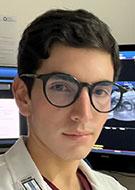The Role of Emotional Intelligence in Radiology
EI can help radiologists strengthen their patient empathy, develop rapport with other physicians and guide their career paths



Since Daniel Goleman published his best-selling book Emotional Intelligence nearly 30 years ago, there has been an increasing awareness of the concept’s profound role in the success of working professionals, including physicians.
“We've known for a long time that people can be book-smart, perform very well on written tests, and have very high IQs, but not necessarily do a good job or succeed in some areas of work and life,” said Richard Gunderman, MD, PhD, John Campbell professor of radiology at Indiana University. “It’s clear that there's an “emotional” domain of abilities, skills and knowledge that some people possess that really helps them be more effective at work and have better relationships.”
EI Not a Component of Medical School Education
While intelligence is generally defined as the ability to learn new concepts and apply that knowledge to problems, emotional intelligence (EI) is the ability to learn about oneself and apply that in the world.
The five components of Goleman’s original EI theory include empathy, effective communication/social skills, self-awareness, self-regulation and motivation. Evidence suggests that for physicians, high measures of EI are positively correlated to increased patient trust, patient satisfaction and lower malpractice claims.
“A person who's a whiz at an IQ test might not notice someone across from them is clearly emotionally distressed,” Dr. Gunderman said. “People who have self-awareness and awareness of others' emotional states have a skill that can really make a difference.”
Despite its recognized benefits, EI is not universally included in the curriculum of radiology residency programs. Standardized tests, such as medical school entrance and board exams, do not assess for EI skills.
“EI isn’t as easily measured as intelligence is with IQ tests,” Dr. Gunderman said. “That might create the presumption that it doesn't really count. But I've been giving lectures on the topic for years, drawing from Daniel Goleman’s book and trying to highlight the importance of this domain and encouraging people to pay attention to it.”
He said trainees find the topic of EI intriguing and many are grateful to have the opportunity to talk about the concept.
Trainees See Benefits of EI
“Developing emotional intelligence is an element of the hidden curriculum, something that happens parallel to medical education but isn’t consciously worked on,” said Juan Legúizamo-Isaza, a diagnostic radiology resident at Fundación Santa Fé de Bogotá University Hospital in Bogotá, DC, Colombia. “I think if we were to take a more targeted approach, we would achieve meaningful results.”
He said EI training should include listening with humility, cultural awareness and developing empathy.
“It’s essential for medical students and residents to participate in mock patient interviews in which students ask questions and interpret how the patient is feeling and receiving information,” Dr. Legúizamo-Isaza said. “By learning to interpret a patient’s affect properly, physicians can redirect the way they’re communicating so that the patient feels better cared for.”
It's important for radiologists to keep the patient in mind, especially as they often have immediate access to radiology reports.
“How we describe findings has such an impact on the way patients receive the report,” Dr. Legúizamo-Isaza said. “It requires tact and carefulness in our wording to mitigate the patient’s fears. That’s what emotional intelligence is.”

EI Can Help in Career Establishment and Growth
For aspiring radiology residents, having a high EI could help earn them a coveted program spot.
“Residency program directors are looking for applicants with EI skills who know how to navigate the complex and unpredictable health care environment,” Dr. Legúizamo-Isaza said.
According to Jay Acharya, MD, the popularity of radiology as a specialty is drawing students with high IQs and EI awareness to the field.
“Radiology has become a job that people want to go into,” said Dr. Acharya who is an associate professor of radiology at the David Geffen School of Medicine at UCLA. “Because radiology has become so competitive, we have the opportunity to sub select a population of students who have basic EI and strong communications skills.”
Dr. Legúizamo-Isaza commented that a physician’s payoff for developing EI skills is, “increased patient loyalty, greater adherence to treatment regimens and better rapport with colleagues and co-workers.”
Speaking to the importance of working with other health care professionals, Dr. Acharya emphasized the need to develop rapport at all levels of care.
“Developing a rapport with other clinicians and feeling like you are part of the direct treatment team is certainly satisfying,” he said. “The increased communication with referring providers is a critical component of managing patients and making the optimal diagnosis quickly.”
Taking opportunities to speak with other physicians about their work can help trainees hone their EI skills.
“It’s extremely important for trainees to participate in multidisciplinary conferences where they learn how to convey findings effectively and how they fit into the big picture of treatment,” Dr. Acharya said.
Learning how to speak in a way that a non-radiologist understands is another critical piece of EI training.
“Our fellows answer calls every day from clinicians, so they learn how to explain imaging findings simply,” Dr. Acharya said. “They may be talking to a first-year resident who doesn’t look at imaging much, and next, they’re talking to a senior resident from neurosurgery who knows imaging well.”
Dr. Gunderman agrees.
“Real emotional intelligence means connecting with people and sincerely trying to understand them, what they're thinking about, and what they're feeling,” he said, “and trying to respond authentically.”
For More Information
Read previous RSNA News stories on emotional intelligence: